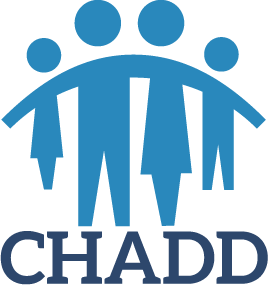Taming the Wandering Mind: Strategies for Helping Children and Teens with Cognitive Disengagement Syndrome
Joseph W. Fredrick, PhD; Melissa C. Miller, PhD; and Stephen P. Becker, PhD
Attention Magazine February 2025
Download PDF
 Since the publication of our article on cognitive disengagement syndrome in the April 2023 edition of Attention, there have been growing numbers of caregivers, clinicians, and educators looking for ways to help children and teens displaying CDS symptoms. CDS is the term used to describe a set of symptoms including excessive internal distractibility (mind wandering, daydreaming, lost in thought), hypoactivity (tiredness, lethargy, slow-moving behavior), and mental fogginess and/or confusion.
Since the publication of our article on cognitive disengagement syndrome in the April 2023 edition of Attention, there have been growing numbers of caregivers, clinicians, and educators looking for ways to help children and teens displaying CDS symptoms. CDS is the term used to describe a set of symptoms including excessive internal distractibility (mind wandering, daydreaming, lost in thought), hypoactivity (tiredness, lethargy, slow-moving behavior), and mental fogginess and/or confusion.
CDS is different from ADHD, including ADHD inattentive symptoms, but also co-occurs in twenty-five to fifty percent of children with ADHD. Recent research also shows that CDS symptoms are linked to poorer mental health as well as social and academic difficulties. It is with these concerns in mind that caregivers and professionals are seeking the most up-to-date knowledge to help this unique subset of youth.
Assessment tools
When wanting to help a child or teen with possible CDS, the first step is to conduct an assessment to determine whether CDS symptoms are indeed present at higher rates than would be expected in the broader population. For instance, mind wandering and daydreaming are present to varying degrees in everyone, and so it is important to first confirm that the daydreaming and other CDS behaviors are indeed elevated and impacting functioning.
Although mental health professionals are best suited to conduct a comprehensive evaluation (also assessing, for example, ADHD, mood difficulties, and sleep patterns), a large body of research has accumulated confirming that CDS symptoms can be assessed with relatively brief rating scales completed by caregivers, teachers, or youth themselves.
Caregiver rating scales are most frequently used to assess CDS. There are currently two scales that have been validated in large samples represented in the United States. The Barkley Sluggish Cognitive Tempo Scale-Children and Adolescents (BSCTS-CA) was developed using the earlier term for CDS and remains a well-supporting scale for assessing CDS based on a large sample of caregiver ratings of children aged six to seventeen in the US. The BSCTS-CA can be purchased from Guilford Press.
Another rating scale is the Child and Adolescent Behavior Inventory (CABI), which assesses various domains including a subscale specific to CDS. The CABI is currently the most-frequently used scale to assess CDS, including strong support for its use in national samples in both the US (ages four to thirteen) and Spain (ages five to sixteen). The CABI is free to download online, including several translations in other languages (available at stephenpbecker.com).
Understanding the severity of CDS, as well as the specific symptoms being rated highly, is a critical first step to inform possible strategies to help support children with CDS.
Helpful strategies
Beyond assessment tools, “How do we help a child with CDS?” is a common question. As important as this question is, it is also important to recognize that clinical trials have yet to be conducted specifically in children with CDS, and so our knowledge is unfortunately quite limited. However, the research that has been conducted to begin evaluating organization/homework skills building, sleep interventions, and mindfulness have shown promise for reducing CDS symptoms.
While awaiting more research, the existing observational and intervention research findings provide useful directions and strategies for supporting youth with CDS. Below, we present our top five list of treatment directions and strategies.
Being mindful. Children and adolescents with ADHD are often supported through medication management, environmental accommodations, behavioral parent training, and/or executive functioning skills training. However, what is a child to do when their mind constantly wanders? A key feature of CDS is excessive mind wandering that is difficult to control, which points to a potential benefit of mindfulness meditation interventions. Results from a recent initial intervention for adolescents with ADHD and CDS found mindfulness to reduce symptoms of CDS and mind wandering.
Mindfulness helps improve focus and self-awareness by training the mind to stay present. Daily mindfulness strategies may include practice of mindful breathing, body scans, mindful eating, grounding exercises, and mindful listening. These strategies are designed to help individuals become more present and aware of their thoughts without judgement.
Like recommendations for parents of children with ADHD, parents may help their child focus and follow directions by giving effective commands (such as contact, one step at a time) and breaking down routines and/or tasks into smaller, more manageable chunks. For children with CDS, taking steps to allow enough time to answer and/or respond to commands or questions, and checking in by saying “where is your attention right now?” can also be helpful.
When completing homework or daily tasks, setting clear limits for attention, and working with the child to see how long they can remain focused before losing focus or mind wandering. Then, having the child make a goal of sustained focus before taking a break. You could also have mini experiments and have the child tally each time their mind wanders, to see if they can make progress. This may also help them better track their mind wandering during other activities (such as school) and give them greater control over when and for how long their mind wanders.
Getting active. A few of the core symptoms of CDS refer to feelings of tiredness, lethargy, or restricted activity. In fact, one study found that adolescents with symptoms of CDS may engage in less daily physical activity and extracurricular activity involvement. Physical activity is critical for children with ADHD to support their emotional and social health, and we believe that this type of strategy may be useful to increase energy levels and stamina for individuals with CDS.
As CDS symptoms and depression are often related, treatments for depression may have promise for addressing CDS. One of these is called “behavioral activation,” a technique aimed to improve mood through increased engagement in positive and meaningful activities.
Getting a good night’s sleep. There is an established link between CDS and sleep difficulties, making it important to consider the child’s sleep quality and quantity when assessing CDS. Although CDS symptoms are not only present because of short or less restorative sleep, obtaining insufficient sleep is likely to worsen CDS symptoms and is an important component to include in any treatment approach for many youths with CDS.
In fact, results from an open trial of a behavioral sleep intervention for adolescents with ADHD found significant reductions in parent-reported, teacher-reported, and self-reported symptoms of CDS.
Ensure your child has a consistent bedtime routine, sleep and wake time, and limits naps and caffeine throughout the day.
Many children with CDS especially struggle waking in the morning and getting going to complete morning activities. Drawing from Dr. Allison Harvey’s transdiagnostic sleep intervention, the RISE-UP mnemonic can be very helpful in addressing challenges with morning routine. RISE-UP stands for:
Refrain from snoozing
Increase activity in first hour
Shower
Expose self to light
Upbeat music
Phone a friend
and is intended to reduce the buildup of sleepiness, increase activity, and elevate mood in the morning.
Employing effective school accommodations and strategies. It is well established that teacher behavior management strategies and classroom accommodations are vital for the success of many students with ADHD. These often include the use of strategies such as a daily report card, frequent attention and movement breaks, preferential seating, and extended time on assignments. Many children with CDS may already have these services in place, given the overlap with ADHD. Here are some ways to consider how these strategies and accommodations may be especially useful for students with CDS.
- Extended time on assignments and responses. Although the research is mixed on whether extended time results in increased academic productivity for students with ADHD, extended time may be noticeably beneficial for students with CDS. This is especially true if there are core symptoms in underactivity and slowed behavior or thinking (the goal is to not merely provide additional time when daydreaming may occur). In children ages eight to twelve, parent and teacher reported CDS symptoms were associated with slower performance across a range of neurocognitive tests. At the same time, it is equally important to provide the student with regular monitoring and checking to ensure they are sustaining focus on the task at hand, as well as ensuring extending time does not keep the student away from other beneficial activities such as lunch or recess with peers. Similarly, given that many children with CDS require additional time to attend, process, and respond to their environment, providing extra time to either write down notes or respond to questions is appropriate.
- Quality over quantity. Many children with CDS take extra time completing their work due to the slower pace of work performance, and it can be reasonable to modify workload and expectations. Specifically, students with CDS may benefit from chunking assignments (for example, working on even problems, working for a designated amount of time) and, rather than being penalized for late or incomplete work, determining ways to grade the amount of work completed within an allotted timeframe.
- Attention prompts and breaks. Preferential seating, distraction-free settings, and effective commands are also helpful for students with CDS. From our conversations with parents and teachers, a child with CDS may appear to be focusing but is lost in thought, mind wandering, spaced out, or their mind is blank. It is critical for teachers to take extra steps to ensure a student is fully paying attention—hand on desk/shoulder, asking comprehension check-ins, asking the child “where is your attention right now?” Further, working with the student to have times throughout their day when daydreaming or mind wandering may be more appropriate, particularly if used alongside mindfulness-based strategies described above.
- Transitional prompts. Students with CDS may take additional time organizing materials and transitioning to new tasks. Strategies may include providing prompts prior to transitions to prepare for what is next, as well as ways to reduce clutter/clutter/number of materials the student needs for each transitional period.
- Encourage active learning strategies. Students with CDS may struggle staying engaged in the classroom, resulting in difficulties staying focused. Strategies to promote academic engagement may include note taking, peer-to-peer group discussions of content, and frequent check-in questions to ensure comprehension (for example, breaking lecture into chunks).
Children with CDS may benefit from opportunities to practice social interaction and communication skills with peers through facilitated social skills training groups, friendship coaching, extracurricular activities, or use of peer tutors in school.
Encouraging peer interactions. A challenging area of daily functioning for many students with CDS is social skills and peer interactions. CDS is associated with increased risk for social difficulties, including withdrawal, shyness, and isolation. Children with CDS may benefit from opportunities to practice social interaction and communication skills with peers through facilitated social skills training groups, friendship coaching, extracurricular activities, or use of peer tutors in school. This may also be a way to use the strengths and interests of children with CDS by identifying social activities where the child can be successful and find enjoyment, which can be certain types of creative or athletic outlets. For example, some youth with CDS may find highly fast-paced, team-based sports such as football, soccer, or basketball to be overwhelming, whereas other sports such as swimming, rock climbing, or skiing may provide an outlet for competition and physical activity in ways that also support social and emotional development with peers.
IN CONCLUSION, ALTHOUGH SPECIFIC EVIDENCE-BASED TREATMENTS for children and adolescents with CDS have yet to be fully developed or tested, there are ways to reduce the negative impact of these symptoms at home, in the classroom, and in school. We have made tremendous progress in recognizing CDS as an important piece of the puzzle for many youth with ADHD.
 Joseph William Fredrick, PhD, is an assistant professor of pediatrics at Cincinnati Children’s Hospital Medical Center and University of Cincinnati College of Medicine. His clinical work focuses on assessment and treatment of ADHD and co-occurring problems, including cognitive disengagement syndrome. He leads the CDS specialty service at Cincinnati Children’s Hospital which provides evaluation and treatment for CDS.
Joseph William Fredrick, PhD, is an assistant professor of pediatrics at Cincinnati Children’s Hospital Medical Center and University of Cincinnati College of Medicine. His clinical work focuses on assessment and treatment of ADHD and co-occurring problems, including cognitive disengagement syndrome. He leads the CDS specialty service at Cincinnati Children’s Hospital which provides evaluation and treatment for CDS.
Melissa C. Miller, PhD, is a postdoctoral fellow in the Center for ADHD at Cincinnati Children’s Hospital Medical Center. Her clinical and research interests include assessment and treatment of ADHD and cognitive disengagement syndrome.
 Stephen P. Becker, PhD, is a professor of pediatrics, endowed chair, and co-director of the Center for ADHD in the division of behavioral medicine and clinical psychology at Cincinnati Children’s Hospital Medical Center. His research, funded by the National Institute of Mental Health and the Institute of Education Sciences, focused on cognitive disengagement syndrome and sleep problems in children and adolescents with ADHD.
Stephen P. Becker, PhD, is a professor of pediatrics, endowed chair, and co-director of the Center for ADHD in the division of behavioral medicine and clinical psychology at Cincinnati Children’s Hospital Medical Center. His research, funded by the National Institute of Mental Health and the Institute of Education Sciences, focused on cognitive disengagement syndrome and sleep problems in children and adolescents with ADHD.
NOTE. The team at Cincinnati Children’s Hospital Medical Center has developed the first CDS clinical service which includes comprehensive evaluation of CDS and feedback for children and adolescents ages six to seventeen. These services can be provided in person or via telehealth to families in certain states. To learn more about this specialty service, visit the website at cincinnatichildrens.org/service/c/adhd/services/cds or contact the CDS team at (513) 636-4336.
ADDITIONAL READING & REFERENCES
Becker SP, Duraccio KM, Sidol CA, Fershtman CE, Byars KC & Harvey AG. (2022). Impact of a behavioral sleep intervention in adolescents with ADHD: Feasibility, acceptability, and preliminary effectiveness from a pilot open trial. Journal of Attention Disorders, 26(7), 1051-1066. https://pubmed.ncbi.nlm.nih.gov/34738484/
Becker SP, Willcutt EG, Leopold DR, Fredrick JW, Smith ZR, Jacobson LA, … & Barkley RA. (2023). Report of a work group on sluggish cognitive tempo: Key research directions and a consensus change in terminology to cognitive disengagement syndrome. Journal of the American Academy of Child & Adolescent Psychiatry, 62(6), 629-645. https://pubmed.ncbi.nlm.nih.gov/36007816/
Fredrick JW & Becker SP. “Cognitive Disengagement Syndrome: What Is It and How Is It Different from ADHD?” Attention, April 2023. chadd.org/attention-article/cognitive-disengagement-syndrome/
Wiggs KK, Thornton K, Dunn NC, Mitchell JT, Fredrick JW, Smith ZR & Becker SP. (2025). Mindful Awareness Practices (MAPs) in adolescents with ADHD and cognitive disengagement syndrome (CDS): A pilot open trial. Journal of Attention Disorders, 29(2), 83-100. https://pubmed.ncbi.nlm.nih.gov/39402941/
Other Articles in this Edition
Dueling Minds: Support for Adults with ASD and ADHD
Aligning Friendship Expectations
The Importance of Self-Compassion for Adults with ADHD
How Does Fidgeting Enhance Focus for Individuals with ADHD?
How to Find College Disability Documentation Requirements
Manage Those Big ADHD Emotions at Work
Couples Living with ADHD: Manage Intense Emotions and Build Deeper Connections
